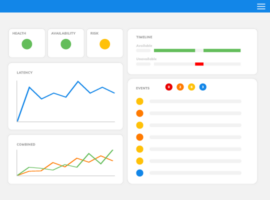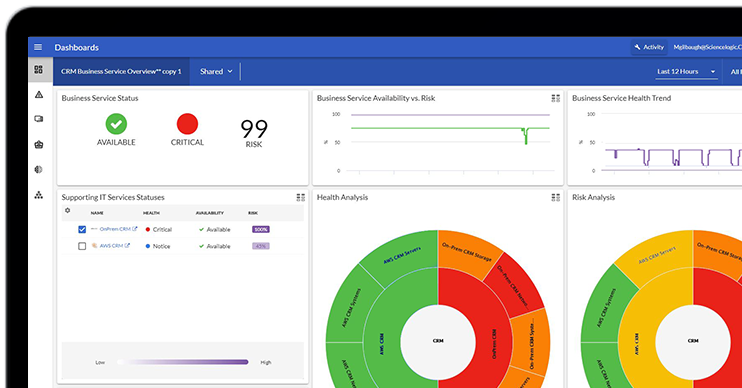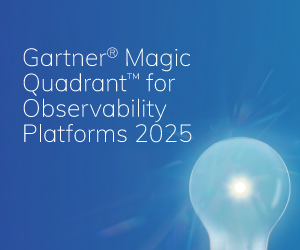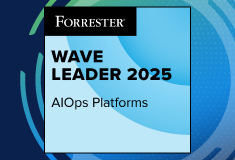Cybersecurity leaders across the public sector are facing a moment of reckoning. Whether at the Department of Defense, a federal agency, or a public university, IT teams are under pressure to defend sprawling infrastructure, detect fast-moving threats, and prove compliance across multiple frameworks—all with fewer resources and tighter timelines.
This challenge has accelerated interest in Zero Trust Architecture (ZTA), a paradigm shift in how we think about security. Gone are the days of relying on hardened perimeters. Zero Trust replaces implicit trust with continuous verification, where every user, device, and application must prove its legitimacy at every step. Identity, context, and behavior—not location—now define access.
To implement Zero Trust effectively, agencies need real-time visibility, behavioral analytics, and automated enforcement. But achieving that vision requires a foundation built on platforms that are secure, scalable, and compliant. That’s where the ScienceLogic Government Cloud stands out—a FedRAMP Moderate-authorized platform designed to power mission-ready Zero Trust operations.
What Zero Trust Means in Practice
At its core, Zero Trust is a strategic response to the reality that breaches are inevitable. That’s why core tenets like “assume breach,” “enforce least privilege,” and “continuously validate” have moved from theory to policy mandates.
The Biden administration’s Executive Order 14028 and the CISA Zero Trust Maturity Model have made Zero Trust more than a concept—they’ve made it a requirement. These directives prioritize visibility, automation, and policy consistency. But meeting them in the real world, especially across hybrid and legacy systems, is far from straightforward.
This is where automation and observability become essential. It’s not just about knowing what’s happening in your environment—it’s about continuously enforcing the right behavior and responding with speed and precision when something deviates.
Why FedRAMP Matters for Zero Trust
FedRAMP is often viewed as a compliance checkbox, but it’s much more than that in the context of Zero Trust. It provides the trust layer that makes secure automation possible.
By enforcing NIST 800-53 Rev. 5 controls—many of which directly map to Zero Trust capabilities like continuous monitoring, audit logging, and incident response—FedRAMP lays a common foundation for both operational confidence and regulatory alignment. Agencies can’t afford to build Zero Trust on platforms that haven’t already met these rigorous standards.
ScienceLogic’s FedRAMP Moderate authorization gives IT leaders the assurance they need to modernize without introducing unnecessary risk. Whether it’s protecting Controlled Unclassified Information (CUI) or managing mission-critical workloads, the ScienceLogic Government Cloud provides a trusted operational backbone.
ScienceLogic in the Zero Trust Framework
The CISA and DoD Zero Trust models are structured around functional pillars such as visibility, automation, identity, devices, and applications. ScienceLogic aligns most directly with three of these.
First, visibility and analytics. Skylar One (formerly SL1) collects and correlates telemetry across hybrid environments—from cloud services to on-prem infrastructure. This real-time insight into infrastructure, service health, and anomalies enables agencies to validate access decisions, detect suspicious behavior early, and maintain continuous situational awareness.
Second, automation and orchestration. Through policy-driven workflows, ScienceLogic automates everything from opening enriched ITSM tickets to enforcing configuration baselines and triggering remediation. This reduces human error, shortens response times, and ensures consistency across environments—key to Zero Trust’s principle of adaptive defense.
Third, device and application posture. ScienceLogic continuously monitors the health and behavior of endpoints, cloud resources, and critical applications. This telemetry feeds into identity platforms, SIEMs, and enforcement engines to ensure access decisions are grounded in real-time context, not outdated assumptions.
Extending Security and Resilience Beyond Federal Agencies
While often associated with federal systems, the principles of Zero Trust—and the benefits of FedRAMP-authorized platforms—are just as critical for state governments, municipalities, and public universities. These organizations face similar challenges: legacy infrastructure, limited budgets, and increasing threats.
Many are navigating overlapping mandates such as NIST 800-171, CMMC, or CJIS—all while handling sensitive data and supporting distributed workforces. ScienceLogic helps these institutions bridge the gap between outdated systems and modern security expectations.
Instead of ripping and replacing, agencies can layer modern observability, automation, and compliance capabilities over existing environments. This not only accelerates Zero Trust maturity but also reduces audit fatigue and operational overhead.
A Unified Approach: Zero Trust + FedRAMP + Automation
ScienceLogic enables a security model that is unified, resilient, and future-ready.
It maps to key mandates and frameworks—including NIST 800-53, NIST 800-207 (Zero Trust), CMMC, and EO 14028—while reducing operational burden. It helps teams do more with less, without sacrificing control or visibility.
In practice, the equation is simple:
Zero Trust requires visibility. Visibility requires automation. Automation requires trust.
ScienceLogic delivers all three—in a platform that scales across agencies, aligns with federal mandates, and evolves with your mission.
Driving Toward Secure, Scalable Modernization
Secure IT modernization isn’t a destination—it’s a discipline. As agencies work to operationalize Zero Trust, the convergence of automation, observability, and compliance becomes essential. With the ScienceLogic Government Cloud, public sector teams gain more than a tool—they gain a strategic foundation for resilience, agility, and trust at scale.
 See ScienceLogic in actionTake a Tour
See ScienceLogic in actionTake a Tour Take Skylar One for a SpinStart Your Test Drive
Take Skylar One for a SpinStart Your Test Drive The Gartner® Magic Quadrant™ for Observability PlatformsRead the Report
The Gartner® Magic Quadrant™ for Observability PlatformsRead the Report The Forrester Wave™: AIOps Platforms, Q2 2025Access the Report
The Forrester Wave™: AIOps Platforms, Q2 2025Access the Report Future-Ready IT: Secure Migration, Faster Value, and Smarter OperationsWatch Now
Future-Ready IT: Secure Migration, Faster Value, and Smarter OperationsWatch Now
